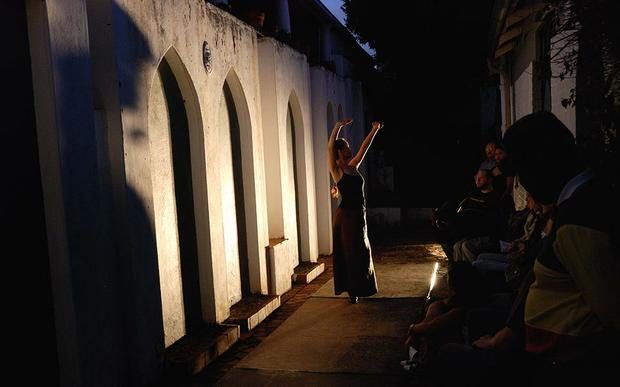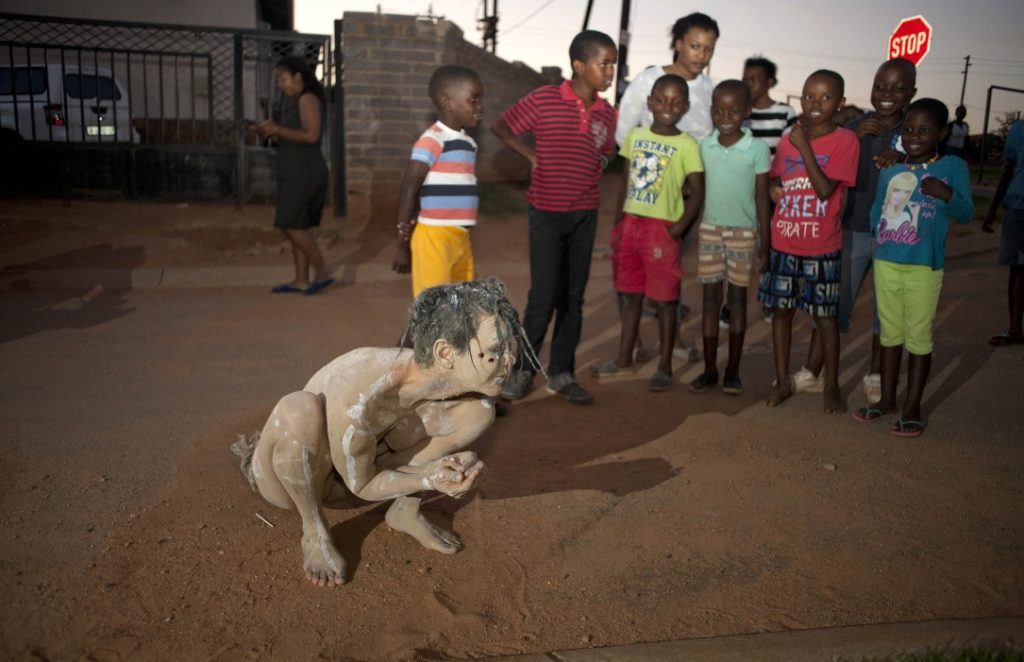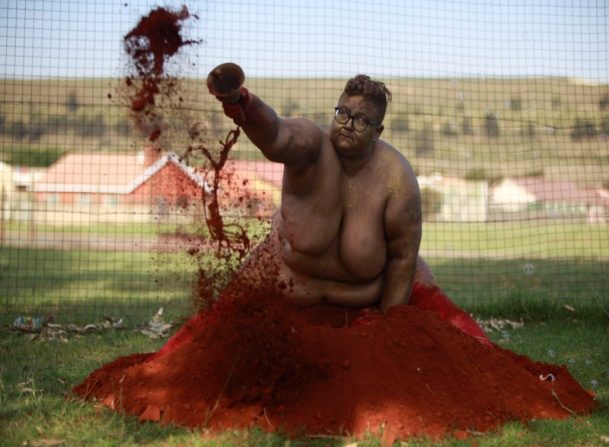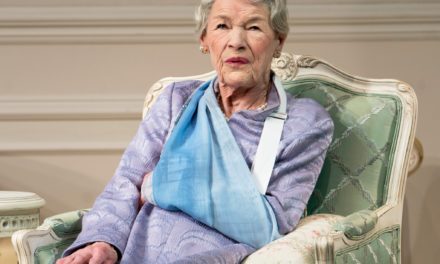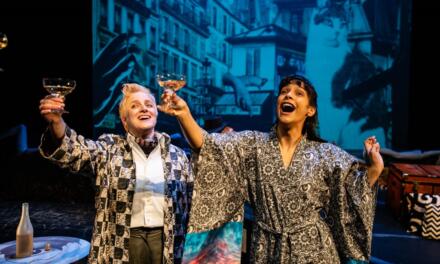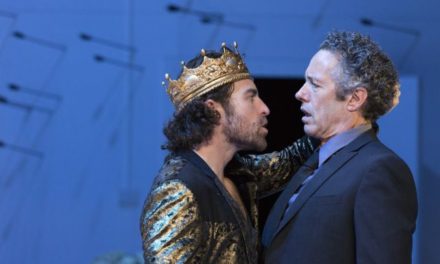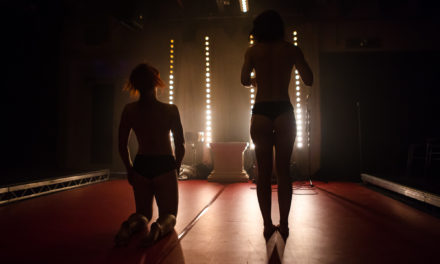The Ntsoana Contemporary Dance Theatre celebrated its tenth anniversary, during the first weekend of December (December 2–4, 2016), by hosting its fourth In House Project. Pieced together and directed by Ntsoana’s Artistic Director, Sello Pesa, the dance theatre expertly created an entire weekend of intriguing and entertaining dance, art, and performances that ranged from the controversial to the hilariously entertaining. And, taking it even further, audiences were taken on a trip around three of Johannesburg’s biggest townships to experience the art and installation pieces in the most eclectic and unconventional of spaces. Audiences found themselves in Cosmo City for day 1, Alexandra for day 2, and Soweto (Diepkloof and Noordgesig) for day 3; giving the whole weekend experience a dash of tourism one cannot get even in the front row of the best theatre hall in South Africa.
The entirety of the In House Project did as Sello Pesa promised: it changed the public perception of urban and suburban spaces and created images that moved out of and beyond the ordinary dance and performance stages that have, to most audiences, become the norm. The In House Project included performances on the streets of Cosmo City, in the roadsides and hostels of Alexandra, and in the sites of Soweto; ending at the Club House in Diepkloof, where Ntsoana began. Apart from the invited audience, the performances were complemented by various different public audiences watching from the streets, people coming in to sneak a peek, and many folks walking and driving past; they varied from children watching from atop trees to inebriated men joining in the Spanish Flamenco dance, each adding a different feel and tone to the performances that was unplanned, and artistically spontaneous.
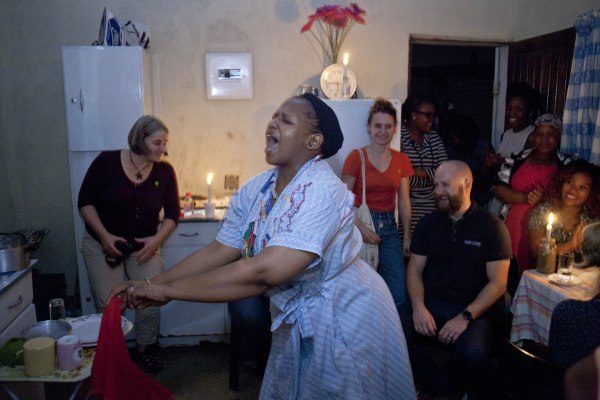
Hlengiwe Lushaba-Madlala performing her play during the In House Project in Cosmo City, Johannesburg. 02/11/16 Photo: Oupa Nkosi
Each location for each performance made that performance a unique experience that can never be recreated or rehearsed. Artists had to adapt to whatever environment and situation they found themselves in at that particular moment. Hlengiwe Madladla, an originator and performer, had to adapt to a power outage in Cosmo City and a larger than expected crowd/audience in Soweto. Despite the unforeseen circumstances, Hlengiwe gave audiences one of the best performances of the entire weekend, bringing together song, dance, and storytelling most spectacularly. Her brilliant performances were hilarious and enticing; from the moment she made audiences wash their hands upon entering her home until the time she kicked them out. Her performances were authentic and personal; all felt like an evening spent with a talkative old friend telling old stories. Her piece was titled ‘Ngicing’u Beauty #1st attempt.
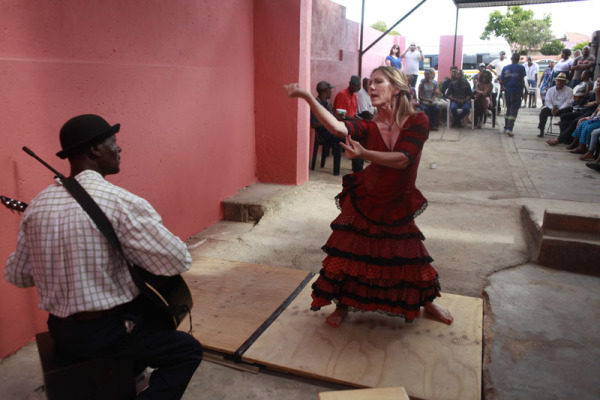
Rosana Maya and guitarist Sipho Paul Mashiane performing in Diepkloof, Soweto. 03/12/2016 Photo: Oupa Nkosi- Siyathuthuka Media
The In House Project did not stop there; it got a bit more intense, alluring, instinctive, and controversial with its pieces. Boemo Babo, Ntate Bothata, Thomas Manemela, and Ayanda Ndlovu came together in Alexandra to deliver an artistic performance that transported audiences to the midst of a feuding family, to the life of a loving father, and to the pleas of art itself. The pieces, performed primarily in the Sesotho language, were played out together and created an artistic haze that spoke to what it means to be a family, to freedom of expression, and to the need for a helping hand in the arts.
In Cosmo City, Sandrine Ébrard (choreographed by Valérie Berger, with technical collaboration by Eve Ledunois) offered audiences an intense and instinctive piece called Lucy that sent children from the surrounding houses out of their homes to witness the enigma that had taken over the streets of Extension 10. Ébrard adapted her animalistic performance to the audience, who came from all around the community and interacted with her immediate surroundings. Her performance created a sense of bewilderment and awe as the audience and children of the community interacted with a creature that seemed to not be human at all but an enigma to watch with caution and excitement. It was an unpredictable piece that left the invited and uninvited audience guessing as to what Ébrard was depicting before them: was it the wild and free radical spirit of human nature or a metaphor for the human’s need for total expression? One could only watch and wonder.
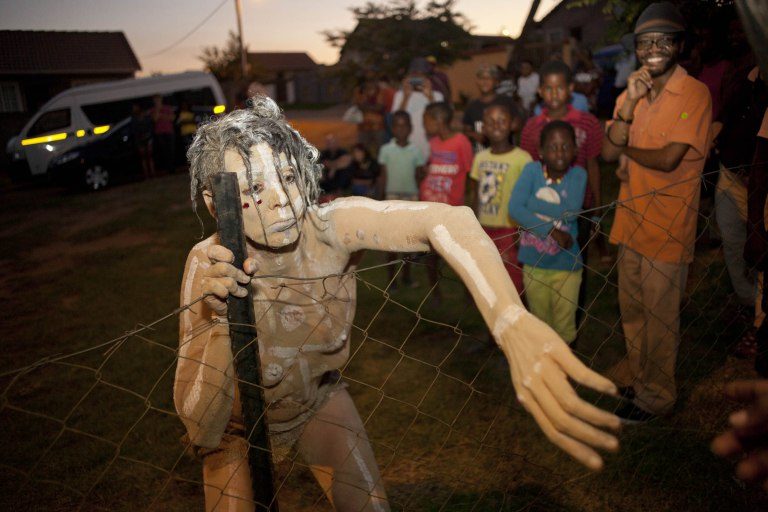
Sandrine Ebrard performing her play Lucy during the In House Project in Cosmo City, Johannesburg. 02/11/16 Photo: Oupa Nkosi
The most controversial and wondrous of performances were Dean Hutton’s Fuck White People and Breathe Goldendean. In Blairgowrie, Randburg, Dean Hutton took audiences into the space completely covered with a phrase repeated in black and white, “Fuck white people.” The piece spoke to white privilege, racism, and identity. The short piece was meant to start a dialogue, and audiences chattered about the discomfort it caused them after the performance; perhaps a discomfort the piece intends. Dean’s second piece, which he performed in Soweto, was intense and intricate; seemingly short and confusing, it was laced with much content. The piece, Breathe Goldendean, evoked wonder and discomfort in the audience; some giggled, not knowing what to make of it. Ensconced in red sand, painted gold all over her body and painted red at the legs, Dean breathed deeply and tossed the sand, bubbles blowing behind her. Intriguing, enticing, and bewildering, the piece speaks of identity and self-expression. In my interpretation, it was resistance art: resisting the constraints of society, of norms, of given gender identities (man/woman), and of the fear that stops such brave self-reflection and daring self-expression.
The Ntsoana Contemporary Dance Theatre celebrated its tenth anniversary in the most tremendous of ways, bringing together a variety of art pieces and locations to create an amalgamation of art and space. It proved, in a most creative way, the boundless nature of art. It was almost as if the In House Project had a single thought in mind: “How dare art have conventions.” The whole weekend experimented with genre, with movement, and with space/location.
Some History
Ntsoana was established in Diepkloof, Soweto, in 2006, their first project taking place alongside the late George Mxolisi Khumalo at the Khumalo Museum and Photographic Institute. The initial project was made possible by a grant from the National Arts Council of South Africa, with auditions and classes held at the Club House in Diepkloof.
Ntsoana is very proud to have one of the original students from the Training and Development Programme, Humphrey Maleka, still dedicated and committed to the company. Brian Mtembu auditioned in 2008 for a tour of Extract of X’s to the AfroVibes Festival in the Netherlands and has been a member of the company since then.
Over the years, Ntsoana has developed from being a dance-based company to exploring public art, site-specific work, and installation. The company has collaborated with such artists as Peter van Heerden, Carlos Pez Gonzales, and Vaughn Sadie; and it has been in residency in San Francisco, Ethiopia, Mozambique, and Tunisia. The award-winning work Inhabitant has been exhibited in galleries in Cape Town, San Francisco, and New Zealand.
The fourth In House Project was funded by the National Lotteries Commission.
All images (except cover image) copyright © Oupa Nkosi (Siyathuthuka Media). Photos are used by the author with permission from the photographer.
A version of this article was published on Lawrence Mashiyane’s blog. Reposted with permission. Read Lawrence’s blog at www.lawrence2writes.wordpress.com.
This post was written by the author in their personal capacity.The opinions expressed in this article are the author’s own and do not reflect the view of The Theatre Times, their staff or collaborators.
This post was written by Lawrence Mashiyane.
The views expressed here belong to the author and do not necessarily reflect our views and opinions.

